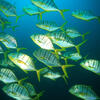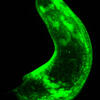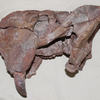Eyes are crucial players in the evolution of organisms. They allow an animal to find food, a mate, potential prey, to avoid predators and aid in regulating the internal clock by differentiating day from night. Eyes are also delicate features that tend to be not well preserved in fossil crustaceans.
One such rare finding is Callichimaera perplexa, a 95-million-year-old crab fossil discovered by senior author Javier Luque, postdoctoral fellow in the Department of Organismic and Evolutionary Biology at Harvard, and fully...
Read more about The ‘Platypus’ of the crab world was an active predator that lurked the Cretaceous seas









